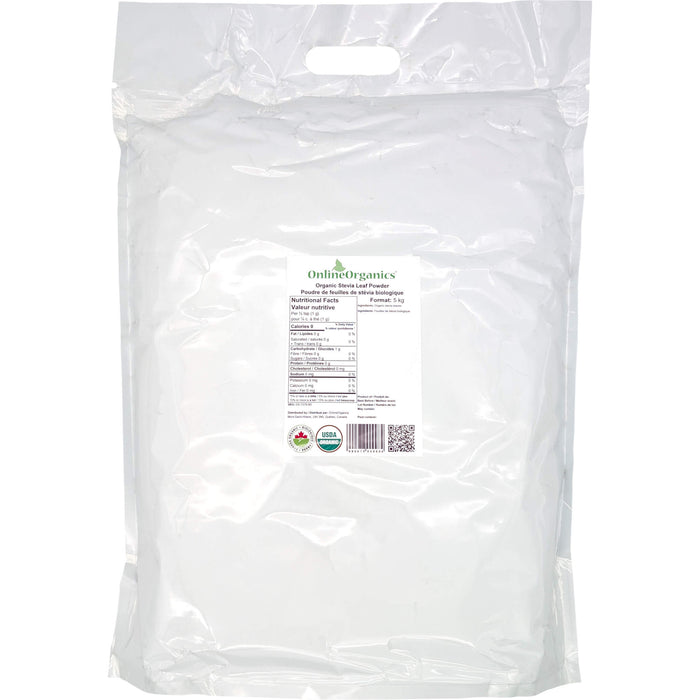
Organic Stevia Leaf Powder (Natural Sweetener)
Specifications (Tap to open):
Category:
Shelf Life:
Country of Origin:
Allergen Information (Tap to open):
We take your health and safety very seriously. If you have any allergen inquiries please Contact Us.
If an allergen is present in the product, it will be clearly declared in the ingredients.
"May Contain" statement NEW FOR 2025 (Progressive rollout):
- In 2025 we will be progressively updating our labels and product pictures with our new label that now include a "May Contain" statement.
- The Canadian Food Inspection Agency (CFIA) dictates that "Cross-contamination statements may be declared by food manufacturers and importers".
- That said, we hold ourselves to much higher standards than the CFIA and Health Canada rules oblige. Most companies do not and you will only rarely see "May Contain" statements.
- If there is a remote chance that there might be cross-contamination of a priority allergen, we will declare it on the product label in the form of a "May Contain" statement.
- A "May Contain" statement does not mean that the allergen is present in the product, it is simple a precautionary measure we take to stay the most transparent possible.
- If an allergen is present in the product, it will be clearly declared in the ingredients.
- For example our Quebec made flours come from a mill that makes both oat and wheat flours. Since both allergens are present in the mill we automatically declare the possibility of cross-contamination even if all precautionary measures are taken.
- Only priority allergens are declared in the "May Contain" statement, which are:
- Cereals & Grains: Triticale, Barley, Oats, Rye, Wheat.
- Tree Nuts: Almonds, Brazil Nuts, Cashews, Hazelnuts, Macadamia Nuts, Pecans, Pine Nuts, Pistachios, Walnuts.
- Peanuts
- Sesame
- Eggs
- Milk
- Soy
- Mustard
- Fish
- Seafood: Crustaceans, Molluscs.
- Sulphites
- Priority allergens are decided by government agencies and health boards. To read more on the subject see "Common food allergens - Priority allergens" published by the CFIA.
- Full CFIA cross-contamination statement explanation "Food allergen cross-contamination (or precautionary) statements".





Our organic stevia leaf powder is the most natural stevia you can get. Made by simply grinding dried stevia leaves into a powder it can be added to all your recipes to cut down on calories while being more natural than white refined stevia found in grocery stores.
Use 1/4 of a teaspoon of stevia leaf powder for every 1 tablespoon of sugar.
What is Stevia Leaf Powder?
- Stevia leaf powder comes from leaves of the plant species "Stevia rebaudiana", native to Brazil and Paraguay.
- The active compounds are steviol glycosides (mainly stevioside and rebaudioside), which have 30 to 150 times the sweetness of sugar, are heat-stable, pH-stable, and not fermentable. The human body does not metabolize the glycosides in stevia, so it contains zero calories.
- Stevia's taste has a slower onset and longer duration than that of sugar, and at high concentrations some of its extracts may have an aftertaste described as licorice-like or bitter.
Stevia vs Stevia Leaf Powder?
- Stevia and stevia leaf powder might sound alike but are not at all the same.
- Stevia, the white powder sold as an alternative sweetener is made from refined stevia leaf powder. It is stripped of most of its nutrients and kept only for its sweetening effect.
- Stevia leaf powder is simply dried pure stevia leaves ground up into a powder. It tastes sweet like refined stevia but less intense and has a lot more nutrients.
- As an example 100g of organic stevia leaf powder can sweeten around 6kg of protein powder. In contrast a 100g of refined stevia sweeten around 40-60kg of protein powder.
General Storage Tips:






